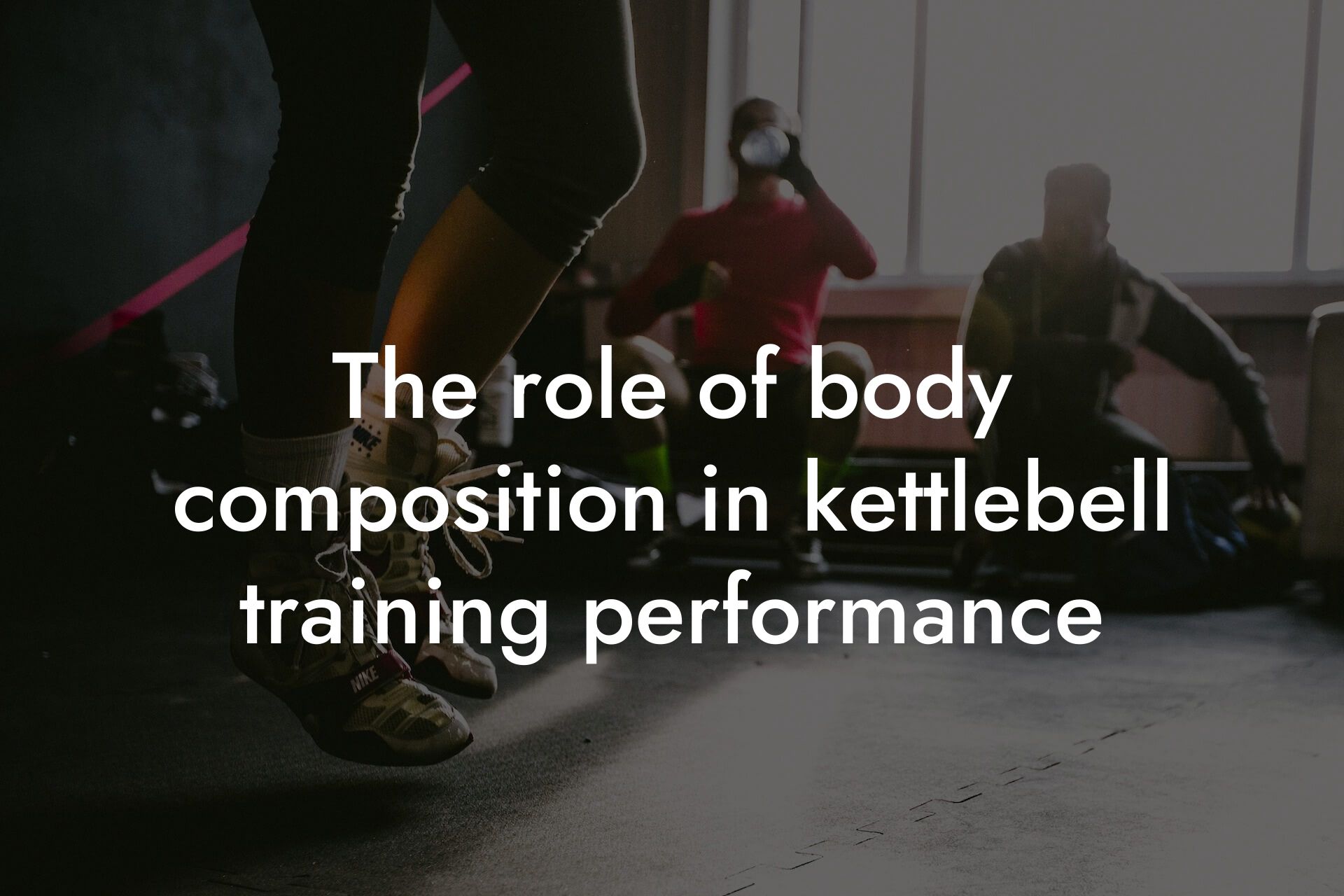As a high-earning professional, you understand the importance of maintaining a strong and healthy physique. Kettlebell training is an excellent way to improve your overall fitness and physique, but it's equally important to prioritize muscle recovery to avoid injury and optimize results. In this article, we'll delve into the world of kettlebell training and provide you with a comprehensive guide on maintaining muscle recovery.
Table of Contents
Understanding Muscle Recovery
Muscle recovery is the process by which your body repairs and rebuilds muscle tissue after exercise-induced damage. When you engage in physical activity, especially high-intensity exercises like kettlebell training, you cause micro-tears in your muscle fibers. This damage triggers an inflammatory response, which can lead to muscle soreness, fatigue, and decreased performance. Proper recovery techniques help to reduce muscle soreness, improve muscle function, and enhance overall physical performance.
The Importance of Recovery in Kettlebell Training
Kettlebell training is a high-intensity, high-impact activity that can cause significant muscle damage. If you don't prioritize recovery, you may experience decreased performance, increased risk of injury, and prolonged muscle soreness. In kettlebell training, recovery is crucial to maintain muscle function, improve technique, and optimize results. By incorporating recovery techniques into your training routine, you can reduce muscle soreness, improve muscle function, and enhance overall physical performance.
Types of Recovery Techniques
There are several recovery techniques that can be used to aid in muscle recovery after kettlebell training. These include:
1. Foam Rolling: Foam rolling is a self-myofascial release technique that involves using a foam roller to apply pressure to specific areas of the body. This helps to reduce muscle tension, improve circulation, and promote relaxation.
2. Stretching: Static stretching involves holding a stretch for a prolonged period to lengthen the muscle and improve flexibility. Dynamic stretching, on the other hand, involves moving your joints through a range of motion to improve mobility and reduce muscle tension.
3. Massage: Massage therapy involves manipulating soft tissue to promote relaxation, reduce muscle tension, and improve circulation. This can be done by a licensed massage therapist or through self-massage techniques.
4. Contrast Showers: Contrast showers involve alternating between hot and cold water to promote circulation, reduce inflammation, and improve recovery.
5. Compression Garments: Compression garments, such as tights or sleeves, provide gentle compression to improve circulation, reduce muscle soreness, and promote recovery.
6. Active Recovery: Active recovery involves engaging in low-intensity exercise, such as yoga or cycling, to promote circulation, reduce muscle soreness, and improve recovery.
Incorporating Recovery into Your Kettlebell Training Routine
To incorporate recovery into your kettlebell training routine, follow these tips:
1. Start with Foam Rolling: Begin your recovery routine with foam rolling to reduce muscle tension and improve circulation.
2. Incorporate Stretching: Incorporate static and dynamic stretching into your routine to improve flexibility and reduce muscle tension.
3. Prioritize Massage: Schedule regular massage therapy sessions or incorporate self-massage techniques into your routine to promote relaxation and reduce muscle tension.
4. Use Contrast Showers: Incorporate contrast showers into your routine to promote circulation, reduce inflammation, and improve recovery.
5. Wear Compression Garments: Wear compression garments during and after exercise to improve circulation, reduce muscle soreness, and promote recovery.
6. Engage in Active Recovery: Engage in low-intensity exercise, such as yoga or cycling, to promote circulation, reduce muscle soreness, and improve recovery.
Creating a Recovery Plan
To create a recovery plan, follow these steps:
1. Identify Your Goals: Identify your fitness goals and determine how recovery fits into your overall training plan.
2. Assess Your Body: Assess your body to identify areas of tension and soreness, and prioritize recovery techniques accordingly.
3. Schedule Recovery Time: Schedule recovery time into your training routine, ideally 1-2 times per week.
4. Mix and Match Techniques: Mix and match recovery techniques to find what works best for you and your body.
5. Monitor Progress: Monitor your progress and adjust your recovery plan as needed.
Maintaining muscle recovery is crucial to optimize results and reduce the risk of injury in kettlebell training. By understanding the importance of recovery, incorporating recovery techniques into your routine, and creating a recovery plan, you can improve muscle function, reduce muscle soreness, and enhance overall physical performance. Remember to prioritize recovery and make it an integral part of your training routine.
At Tano Performance Group, we understand the importance of recovery and provide our clients with comprehensive body assessments using our state-of-the-art DEXA machine. Our team of experts will work with you to create a personalized training and recovery plan tailored to your unique needs and goals. Contact us today to take your fitness to the next level.
Frequently Asked Questions
What is kettlebell training and how does it help with muscle recovery?
Kettlebell training is a form of strength training that uses a weighted ball with a handle to work multiple muscle groups simultaneously. It helps with muscle recovery by increasing blood flow, reducing inflammation, and promoting muscle relaxation. Kettlebell exercises can be modified to suit different fitness levels, making it an accessible and effective way to maintain muscle recovery.
Why is muscle recovery important for high-earning professionals?
Muscle recovery is crucial for high-earning professionals because it directly impacts their physical and mental performance. When muscles are not properly recovered, it can lead to fatigue, decreased productivity, and a higher risk of injury. By prioritizing muscle recovery, professionals can maintain their physical appearance, optimize their body fat percentage, and improve their overall well-being.
How often should I incorporate kettlebell training into my workout routine?
It's recommended to incorporate kettlebell training 2-3 times a week, allowing for at least 48 hours of rest between sessions. This frequency allows for adequate recovery time while still promoting progressive overload and muscle adaptation.
What are some common kettlebell exercises for muscle recovery?
Some common kettlebell exercises for muscle recovery include the kettlebell swing, goblet squat, single-arm row, and Turkish get-up. These exercises target multiple muscle groups, improve mobility, and enhance functional strength.
Can kettlebell training help with muscle soreness?
Yes, kettlebell training can help reduce muscle soreness by increasing blood flow and promoting muscle relaxation. The dynamic movements involved in kettlebell exercises help to flush out waste products and reduce inflammation, leading to faster recovery and reduced muscle soreness.
How does kettlebell training compare to traditional weightlifting for muscle recovery?
Kettlebell training is often more effective for muscle recovery than traditional weightlifting because it involves dynamic movements that promote blood flow and muscle relaxation. Traditional weightlifting can be more static and may not provide the same level of muscle activation and recovery.
Can I use kettlebell training for injury rehabilitation?
Yes, kettlebell training can be modified to accommodate injuries and aid in rehabilitation. By using lighter weights and focusing on controlled movements, kettlebell exercises can help improve range of motion, strength, and function while minimizing the risk of further injury.
What are some benefits of kettlebell training for bone density?
Kettlebell training can help improve bone density by promoting weight-bearing exercises, which stimulate bone growth and density. The dynamic movements involved in kettlebell exercises also help to improve balance and coordination, reducing the risk of falls and fractures.
How does kettlebell training impact body fat percentage?
Kettlebell training can help improve body fat percentage by increasing metabolism, building muscle mass, and enhancing insulin sensitivity. The high-intensity nature of kettlebell exercises also promotes excess post-exercise oxygen consumption (EPOC), leading to increased caloric burn after exercise.
Can kettlebell training be used for cardio and endurance training?
Yes, kettlebell training can be used for cardio and endurance training by incorporating high-intensity interval training (HIIT) protocols. This type of training involves short bursts of intense exercise followed by brief periods of rest, which can improve cardiovascular fitness and increase endurance.
What is the best way to warm up for kettlebell training?
A dynamic warm-up is recommended before kettlebell training, including exercises such as light cardio, mobility drills, and muscle activations. This helps to prepare the muscles for exercise, reduce the risk of injury, and improve performance.
How do I choose the right kettlebell weight for my fitness level?
Choose a kettlebell weight that allows you to complete the desired number of repetitions with proper form. If you're a beginner, start with a lighter weight and gradually increase as you build strength and endurance.
Can I use kettlebell training for stress relief and mental well-being?
Yes, kettlebell training can be an effective way to reduce stress and improve mental well-being. The physical activity and sense of accomplishment from completing a workout can help reduce stress and anxiety, while the rhythmic movements involved in kettlebell exercises can be meditative and calming.
How does kettlebell training impact flexibility and mobility?
Kettlebell training can help improve flexibility and mobility by incorporating dynamic movements that challenge range of motion and promote functional strength. The exercises involved in kettlebell training also help to improve joint mobility and reduce stiffness.
Can I incorporate kettlebell training into my existing workout routine?
Yes, kettlebell training can be easily incorporated into your existing workout routine. Simply replace one or two traditional weightlifting exercises with kettlebell exercises, or add kettlebell training as a supplemental workout to improve muscle recovery and overall fitness.
What are some common mistakes to avoid when starting a kettlebell training program?
Common mistakes to avoid when starting a kettlebell training program include using too much weight, poor form and technique, and not warming up or cooling down properly. It's also important to start slowly and gradually increase intensity and volume as you build strength and endurance.
How does kettlebell training impact athletic performance?
Kettlebell training can improve athletic performance by enhancing functional strength, power, and endurance. The dynamic movements involved in kettlebell exercises also help to improve agility, speed, and coordination, making it an effective training tool for athletes.
Can kettlebell training be used for rehabilitation after surgery or injury?
Yes, kettlebell training can be used for rehabilitation after surgery or injury. The exercises involved in kettlebell training can be modified to accommodate physical limitations and promote gentle, progressive strengthening and mobilization.
What are some benefits of kettlebell training for overall health and wellness?
Kettlebell training offers numerous benefits for overall health and wellness, including improved cardiovascular fitness, enhanced muscle function, and increased bone density. It also promotes weight loss, improves mental well-being, and reduces the risk of chronic diseases such as diabetes and heart disease.
How does kettlebell training compare to other forms of strength training?
Kettlebell training offers a unique combination of strength, power, and endurance training that sets it apart from other forms of strength training. The dynamic movements involved in kettlebell exercises also promote functional strength and mobility, making it an effective training tool for everyday life and athletic performance.
Can I use kettlebell training to improve my posture and reduce back pain?
Yes, kettlebell training can help improve posture and reduce back pain by strengthening the muscles that support the spine and promoting good posture and movement patterns. The exercises involved in kettlebell training also help to improve core strength and stability, reducing the risk of back pain and injury.
Here are some related articles you might love...
- Improving functional strength with kettlebell training
- The role of body composition in kettlebell training performance
- Reducing body fat for better kettlebell workout results
- The importance of bone density in kettlebell fitness
- Nutrition strategies for kettlebell enthusiasts
- Strength training tips specific to kettlebell exercises
- Balancing strength, speed, and flexibility in kettlebell workouts
- How DEXA scans can benefit kettlebell training athletes
Zak Faulkner
Zak Faulkner is a leading authority in the realm of physical health and body composition analysis, with over 15 years of experience helping professionals optimise their fitness and well-being. As one the experts behind Tano Performance Group, Zak has dedicated his career to providing in-depth, science-backed insights that empower clients to elevate their physical performance and overall health.
With extensive knowledge of DEXA technology, Zak specializes in delivering comprehensive body assessments that offer precise data on body fat, muscle mass, bone density, and overall physique. His expertise enables individuals to make informed decisions and achieve their fitness goals with accuracy and confidence. Zak’s approach is rooted in a deep understanding of human physiology, combined with a passion for helping clients unlock their full potential through personalised strategies.
Over the years, Zak has earned a reputation for his commitment to excellence, precision, and client-focused service. His guidance is trusted by top professionals who demand the best when it comes to their health. Whether advising on fitness programs, nutritional strategies, or long-term wellness plans, Zak Faulkner’s insights are a valuable resource for anyone serious about taking their health and fitness to the next level.
At Tano Performance Group, Zak continues to lead our Content Team revolutionising how professionals approach their physical health, offering unparalleled expertise that drives real results.




